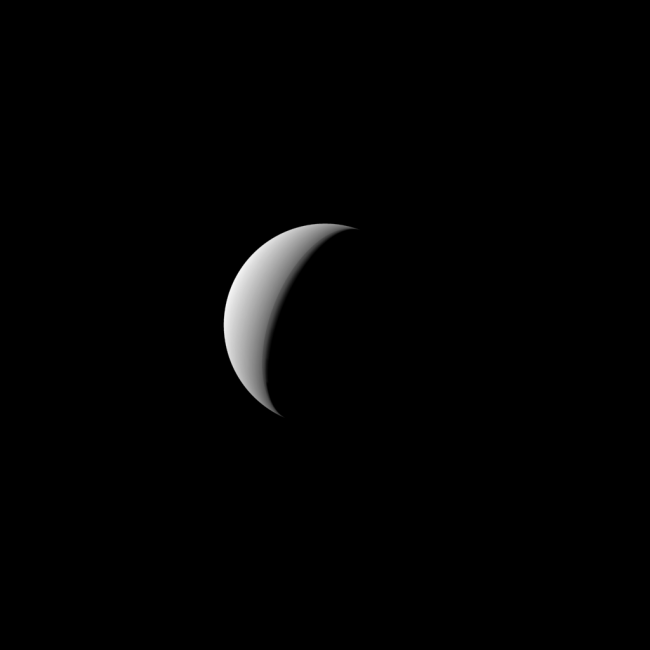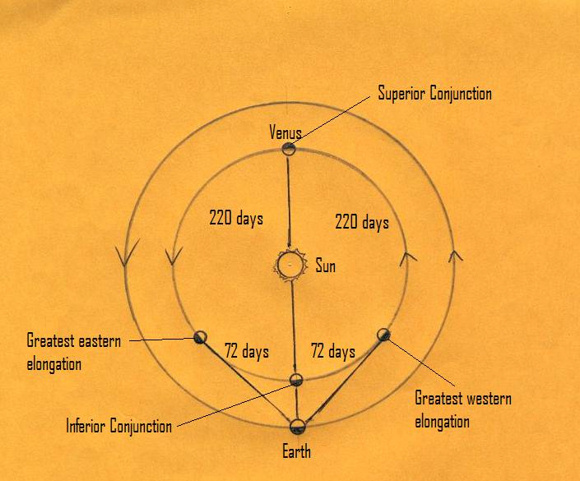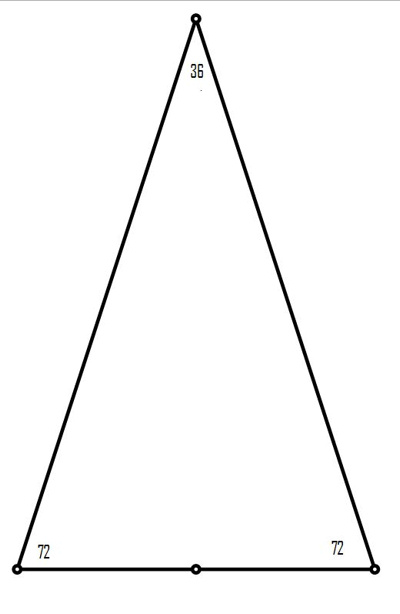Before sunrise tomorrow – April 30, 2017 – the planet Venus will display its greatest illuminated extent. That means the planet’s daytime side is now covering more square area of Earth’s sky than at any other time during its present morning apparition. So this weekend is a great time to look for Venus! It will be shining at or near its greatest brilliancy before sunrise. Especially if you see it with the eye alone, its brightness will amaze you. Around times of greatest brilliancy for Venus, many will report it as a UFO.
Click here for recommended almanacs; they can tell you when Venus will rise into the morning sky.
You might think Venus appears most brilliant when we see its disk as most fully illuminated from Earth. Not so.
If you were to observe Venus with the telescope at its greatest illuminated extent, you’d see that Venus’s disk is only a touch more than one-quarter illuminated by sunshine. A full Venus is always on the far side of the sun from us, so its disk size at full phase always appears small to us on Earth. It’s only when we see Venus as a crescent – when Earth and Venus are on the same side of the sun, with Venus preparing to pass between us and the sun, or just having so passed – that this world is close enough to us to exhibit its greatest illuminated extent. At these special times, the daytime side of Venus covers the greatest area of Earth’s sky.

Venus passed between the Earth and sun on March 25, 2017 and so entered Earth’s morning sky. Venus will shine in our sky at dawn for the rest of 2017 and finally transition back to the evening sky on January 9, 2018.
Take a look at the chart below. It gives you a bird’s-eye view of Earth and Venus in orbit, helping you see how and why Venus can transition from evening to morning sky. Because Venus orbits the sun inside Earth’s orbit, we can’t see Venus opposite (180o) the sun in our sky (like the full moon). We can’t even see Venus 90o from the sun (like the half-lit quarter moon). At most, Venus strays no farther than 47o from the sun in our sky.
This is called Venus’ greatest eastern elongation when Venus appears in the evening sky and greatest western elongation when Venus is in the morning sky.

Venus reaches its greatest elongation in the evening sky about 72 days before inferior conjunction, and then reaches its greatest elongation in the morning sky some 72 days after inferior conjunction. If you look at Venus through a telescope at these times, you’ll see that its disk is about 50% illuminated by sunshine.
Venus exhibits its greatest illuminated extent about 36 days before – and after – inferior conjunction. Through the telescope, Venus appears about 25% illuminated in sunshine at these times. Thirty-six days before inferior conjunction, it’s Venus’ brightest appearance in the evening sky; thirty-six days after inferior conjunction, it’s Venus brightest appearance in the morning sky.
Let the golden triangle help you to remember these Venus’ milestones. The two base angles equal 72o and the apex angle equals 36o. Quite by coincidence, Venus’ greatest elongations happen 72 days before and after inferior conjunction, and Venus’ greatest illuminated extent happens 36 days before and after inferior conjunction. See the diagram above of Venus’ and Earth’s orbits.
Astronomy events, star parties, festivals, workshops for 2017

Bottom line: Even though this world is only about one-quarter illuminated in sunshine right around April 30, 2017, as seen from Earth, Venus is nonetheless shining at its brightest best in the morning sky!












